Corghi – Blimunda
Blimunda – Dora Rodrigues
Baltasar Mateus – Julian Hubbard
Bartolomeu Lourenço de Gusmão – Luís Rodrigues
Sebastiana Maria de Jesus – Maria Luísa de Freitas
Domenico Scarlatti – Luís Madureira
Giovanni V – Marcello Urgeghe
Donna Marianna – Sara Carinhas
Maria Barbara – Francisca Pinto
Fra Antonio de San José – Simão do Vale Africano
Frate Dominicano – Manuel Chaves
Ottetto vocale (gruppo madrigalistico) – Mariana Castello-Branco, Mariana Sousa, Marta Magalhães, Carolina Figueiredo, Sérgio Martins, Leonel Pinheiro, Ricardo Panela, Miguel Maduro-Dias
Coro do Teatro Nacional de São Carlos, Orquestra Sinfónica Portuguesa / José Eduardo Gomes.
Stage director – Nuno Carinhas.
Teatro Nacional de São Carlos, Lisbon, Portugal. Monday, November 14th, 2022.
This year makes the centennial of the birth of the celebrated Lusophone author, José Saramago. There are a number of events taking place to mark this anniversary. Across town, this coming weekend, the Fundação Gulbenkian will perform Don Giovanni with the libretto adapted to reflect Saramago’s own treatment of the tale, and conducted by Nuno Coelho who led that glorious Così there earlier this year. Meanwhile, at the Teatro Nacional de São Carlos, the house has revived Azio Corghi’s Blimunda, based on Saramago’s 1982 novel, Memorial do convento. The opera received its world premiere at the Scala in May 1990, and was premiered here in the same production, by Jérôme Savary, in May of the following year.
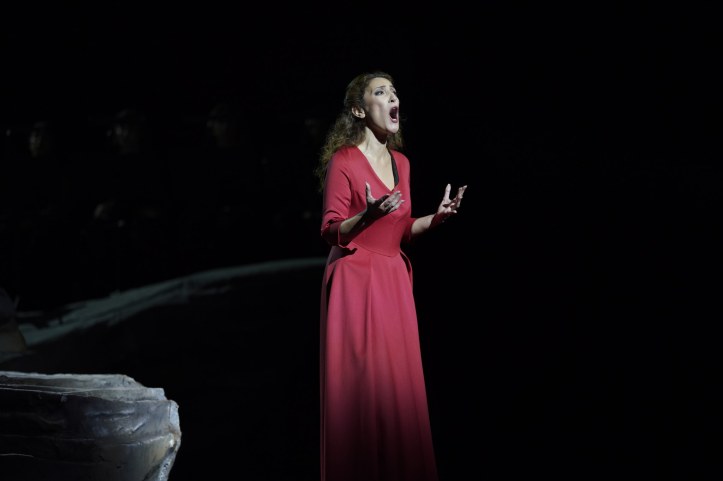
For this new staging, the house confided the stage direction to Nuno Carinhas, a noted painter, set designer and stage director, while a mainly local cast was placed under the musical direction of José Eduardo Gomes. Corghi’s is an interesting opera, one that attempts to encapsulate the world of Saramago’s novel, into the space of two hours of music. The novel is notable for bringing together, the turmoil of Portuguese society in the 17th century; combining historical figures, such as Scarlatti and aviation pioneer Bartolomeu de Gusmão, with King João V and Queen Maria Ana, with fictional characters, Blimunda (who has the rare gift of being able to see inside people) and Baltasar (who lost his hand in the war). Surrounding these are, of course, the Portuguese people and the omnipresent threat of the inquisition. Rather than attempting to distil the novel, Corghi, who wrote the libretto together with Saramago, instead places the action in three diverse spaces – the ‘spazio acustico’, ‘spazio immaginario’, and ‘spazio reale’. The effect leaves us with a questioning of what might be real and what is perceived – particularly as Corghi uses an amplified octet of singers to produce additional acoustic effects, where in making noises, singing fragments of melody, or indeed adding what could be twentieth century impressions of renaissance madrigals, they add an additional acoustic layer to the texture.

Indeed, Corghi’s music takes us on an acoustic journey. Speakers scattered around the house, amplify individual instruments, or the voices of the octet, leading us to wonder what is real and what could be amplified electronics. Corghi also distinguishes between sung voices, Baltasar, Blimunda, Gusmão and Blimunda’s mother, Sebastiana Maria de Jesus, and the other characters who are spoken roles. Corghi’s word setting of the vocal lines requires characters to spend a lot of time declaiming their lines in the lower part of their registers, yet at times asks them to sing out at the very top of their voice, making considerable leaps. I left with a sense that Corghi’s music never really moves beyond a stately andante, providing an enveloping sound world around the action, yet lacking in forward momentum and compelling rhythm. There’s a hazy world of high string harmonics, occasionally interrupted by brassy outbursts or a bluesy trumpet, but otherwise the score ambles along in an atmospheric way.

Carinhas’ gives us a fluent and cogent staging. The set (Carinhas with Ana Vaz), is centred around three rocks, reflecting the tripartite structure of the libretto, with Scarlatti declaiming his lines from the rock on the left, the main part of the action taking place in the centre rock, while the octet sings on the right-hand rock. A visual artist, João Alexandrino (known as JAS), provides live design projections on the back of the stage, creating images that evolve from perceived into actual, with notable fluency. Personenregie is sensible, with characters who clearly relate to each other, and the chorus moved around as a large block. This is certainly a staging that does what it needs to do and presents the action logically, amplifying the multidimensional nature of the score.

The musical performance had clearly been prepared with exceptional attention to detail. José Eduardo Gomes led a reading of extraordinary clarity, soliciting playing of the highest quality from the Orquestra Sinfónica Portuguesa. There was delicacy in the way that the strings gave us those hazy harmonics, or the sheer poetry with which the solo flute gave us long, lyrical lines that were echoed around the room through amplification. The big brass and percussion outbursts were attacked with remarkable unanimity. There was a clarity to Gomes’ direction that brought out a wealth of instrumental detail, the orchestra had clearly been outstandingly prepared and they played this multifaceted score with staggering precision. The chorus made a massive sound, pinging out focused tone into the auditorium, with admirable accuracy of tuning.
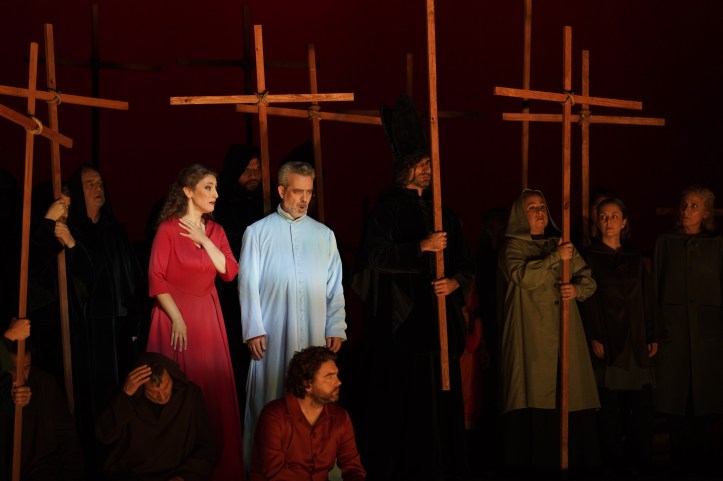
As the titular character, Dora Rodrigues, spent much of the evening declaiming a juicy chest register through the text. It’s a challenging sing given that she spends so much time down there, yet out of nowhere has to leap up to the top and sustain some high-lying writing from nowhere. Rodrigues approached this confidently, singing with authority and presenting a compelling figure on stage. The top did have a tendency to want to submit to the forces of gravity, the effort needed to sit up there after having spent so long lower down, apparent in how the sound tapered off, although her tuning was impressive. Her claret-toned soprano has an attractive sheen and her diction is also impeccable, using those Italian vowels to find beauty in the line.
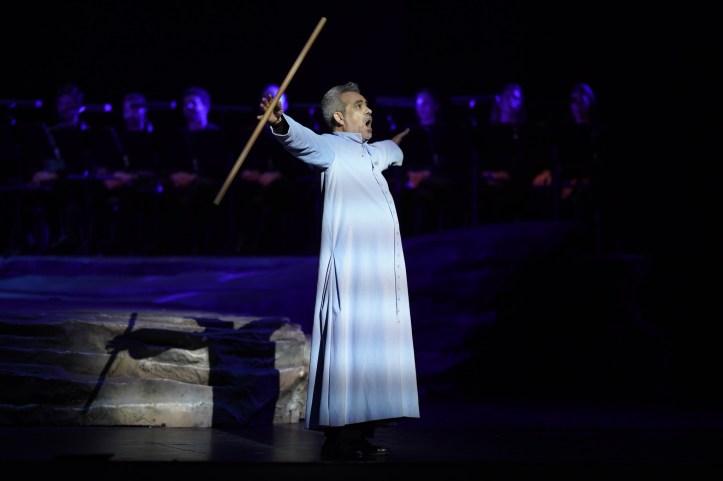
For Baltasar, Julian Hubbard also needed to declaim some long passages of text which he did confidently in a focused tenor. The role requires the heft of a heldentenor with the ability to shade the tone with delicacy and Hubbard certainly rose to the occasion. He was capable of volume but also pulled back and caressed the tone lovingly. He coped well with the demanding tessitura, negotiating the passaggio with confidence. Luís Rodrigues sang Gusmão in a rustic baritone, attacking his music heroically, particularly those high-lying phrases that come from nowhere, even if it audibly took him to his limits. Maria Luísa de Freitas sang Sebastiana in a commanding contralto, declaiming the text as if possessed, projecting focused tone into the auditorium.
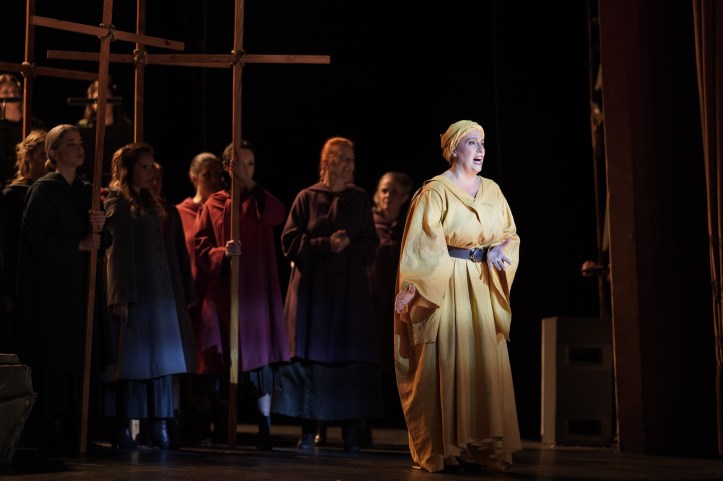
The various spoken roles were admirably taken. Luís Madureira, himself a noted tenor, spoke Scarlatti’s lines in Luso-accented Italian; while Marcello Urgeghe and Simão do Vale Africano both exploited the beauty of those Italian vowels and lyrical intonation. The octet, composed of singers with flourishing solo careers, sang with an impressive unanimity of approach, and achieving in the seemingly impossible assignment of blending ravishingly together, while also giving us an extensive range of vocal effects.
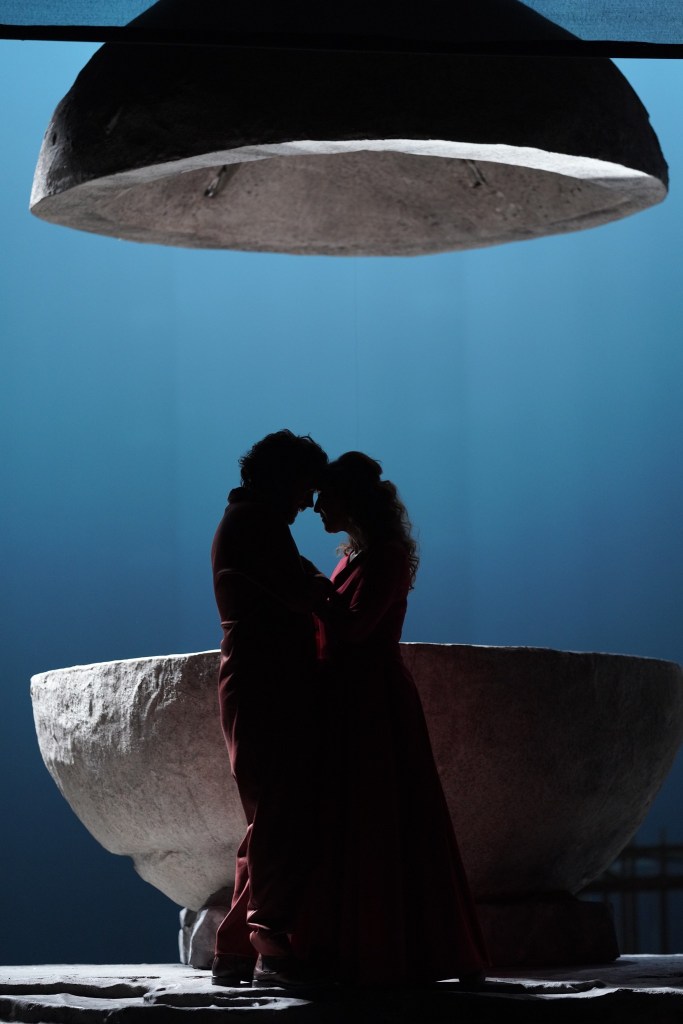
This was an evening that had clearly been exceptionally well prepared. The musical values were extremely high and to perform as multi-faceted a score as this with such assurance, precision and dedication is a significant achievement for this venerable house. The staging also provided an effective framework for the action and illustrated the complex libretto with clarity and humanity. And yet, I left not entirely convinced by Corghi’s score. It’s exceptionally rich in detail, vision and imagination. At the same time, it seems to float in the air, ambling through the evening while not giving us a sense of a cogent drama powering to an inevitable conclusion, and perhaps was a half-hour or so too long. That said, one could not wish to hear a performance more superbly prepared and executed than this. The audience received the evening with some tepid applause at first, which grew into a roar as the curtain calls continued, receiving the cast with an extremely generous standing ovation.
[…] the staging perfunctory. In Lisbon, the Teatro São Carlos revived the late Azio Corghi’s Blimunda. It was given a performance that could hardly have been bettered, satisfyingly cast across […]